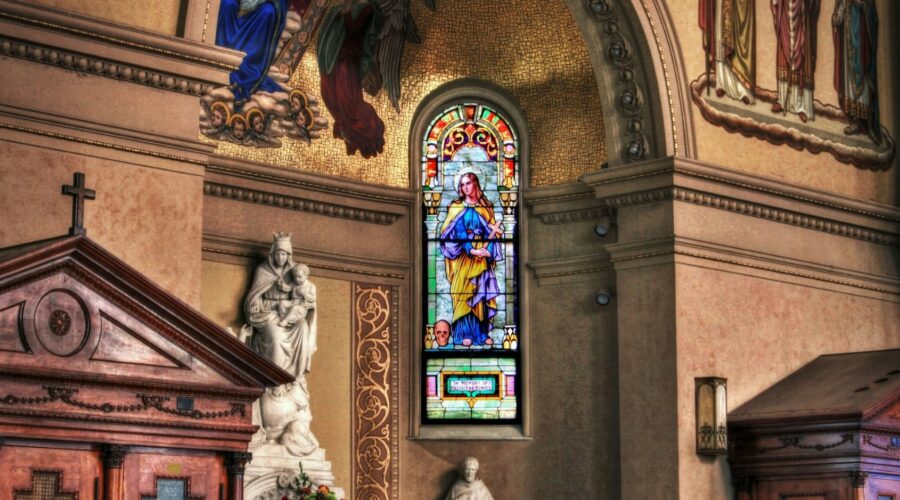Your cart is currently empty!
Exploring the Divine Liturgy of the Eucharist: A Comprehensive Guide

Introduction
The Liturgy of the Eucharist, a cornerstone of Christian worship, holds profound significance for believers. From its origins in the Upper Room to its central role in present-day faith, this sacred rite offers a glimpse into the transformative power of God’s Word and presence. This comprehensive guide will delve into the various aspects of the Liturgy of the Eucharist, unraveling its history, structure, symbolism, and the spiritual nourishment it provides to the faithful.
Historical Origins of the Eucharist
The Eucharist finds its roots in the Last Supper of Jesus Christ with his disciples, as recounted in the Gospels. During that pivotal meal, Jesus took bread and wine, blessed them, and instructed his followers to consume them in remembrance of his sacrifice. This act, known as the institution of the Eucharist, marked the foundation of the sacrament that would become an essential part of Christian worship.
Structure of the Liturgy of the Eucharist
The Liturgy of the Eucharist is typically divided into four main parts:
1. Gathering Rite
The Gathering Rite opens the service and invites the congregation to worship together. It includes prayers, hymns, and the presentation of the bread and wine.
2. Liturgy of the Word
In the Liturgy of the Word, Scripture readings from the Old and New Testaments are proclaimed. These readings serve to connect the congregation to God’s ongoing revelation and prepare them for the sacrament.
3. Liturgy of the Eucharist
The heart of the Liturgy of the Eucharist, this section involves the preparation of the bread and wine, their consecration by the priest, and the distribution of Communion to the faithful. It is during this time that the transformation of the elements into the Body and Blood of Christ takes place.
4. Concluding Rite
The Concluding Rite concludes the liturgy with prayers of thanksgiving, a blessing, and the dismissal of the congregation. It serves as a reminder that the encounter with God during the Eucharist extends beyond the service itself.
Symbolism in the Eucharist
The elements of the Eucharist, namely bread and wine, hold profound symbolic meaning:
- Bread: Represents the broken body of Christ, his sacrifice and nourishment for the faithful.
- Wine: Symbolizes the blood of Christ, his life poured out for the redemption of humanity.
Spiritual Significance of the Eucharist
The Liturgy of the Eucharist holds immense spiritual significance for believers:
1. Communion with Christ
Through the reception of Communion, the faithful enter into a mystical union with Christ. They share in his life, his sacrifice, and his promise of eternal salvation.
2. Nourishment and Healing
The Eucharist serves as spiritual sustenance, nourishing the soul and offering healing to the wounded heart. It provides strength and guidance for the journey of faith.
3. Unity of the Church
The Eucharist fosters unity among the faithful. By participating in the same meal, believers are reminded of their common bonds in Christ and their call to live in harmony with one another.
Tips for a Meaningful Experience
To maximize the spiritual benefits of the Liturgy of the Eucharist, consider these tips:
- Be present and attentive: Focus on God’s presence and the significance of the service.
- Prepare yourself: Reflect on your relationship with Christ and seek forgiveness for any sins that may hinder your communion.
- Receive Communion with reverence: Approach the altar with a sense of awe and gratitude.
- Meditate on the experience: Take time after Communion to reflect on its impact and how it will guide your daily life.
Conclusion
The Liturgy of the Eucharist is a sacred and transformative ritual that offers a profound encounter with God’s grace. Through its symbolic elements and spiritual significance, it nourishes the souls of the faithful, strengthens the unity of the Church, and offers a glimpse into the eternal banquet to come. By embracing the Liturgy of the Eucharist with open hearts, believers draw closer to Christ and experience the fullness of his love and redemption.